Cats are fascinating creatures, known for their quirky and often mysterious behaviors. Among these, their sleeping habits stand out as particularly intriguing. While it may seem like your feline friend is simply dozing the day away, their sleeping positions and habits can reveal a lot about their physical and mental state. This article explores ten unusual cat sleeping habits and what they might mean, offering insights into your cat’s behavior and well-being.
The Curled-Up Ball
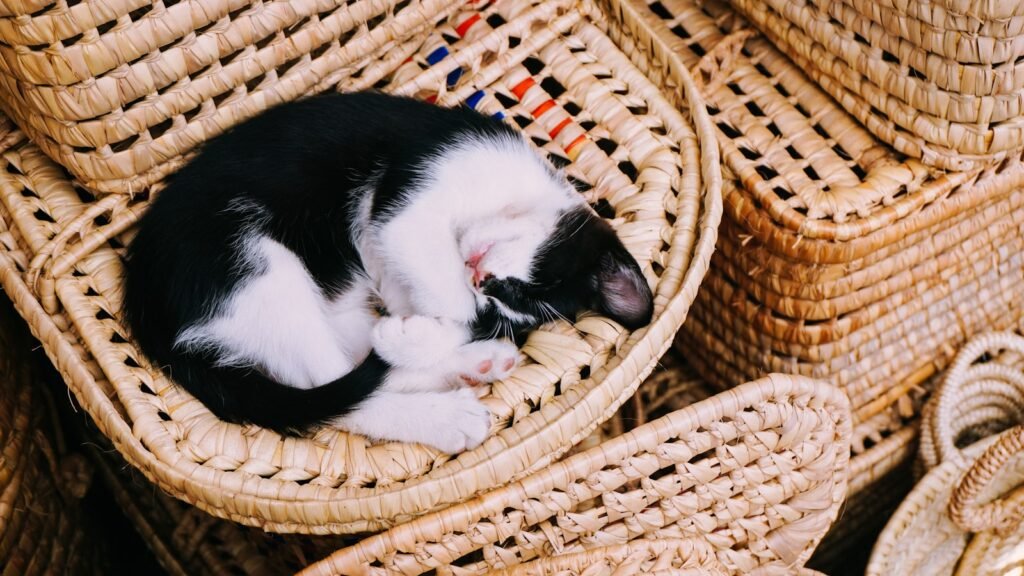
One of the most common yet unusual ways cats sleep is by curling up into a tight ball. This position is not just adorable but also practical. It helps to conserve body heat while protecting vital organs. Cats often assume this position when they are feeling secure and comfortable. However, in some cases, it might suggest that they are trying to keep warm or feel a need for additional protection due to anxiety or insecurity.
The Side Sleeper

When a cat sleeps on its side with its limbs stretched out, it indicates a state of relaxation and trust. In this position, the cat’s vital organs are exposed, suggesting that they feel safe and secure in their environment. If your cat frequently sleeps this way, it’s a good sign that they are comfortable in their surroundings and trust their human companions.
The Loaf Position

Cats often tuck their paws underneath their bodies, resembling a loaf of bread. This position, known as “the loaf,” is generally an indicator that the cat is in a state of repose but not in a deep sleep. They could be resting, yet ready to spring into action if needed. This habit strikes a balance between comfort and alertness, suggesting that your cat feels calm but remains prepared for sudden changes in their environment.
The Belly-Up Sprawl
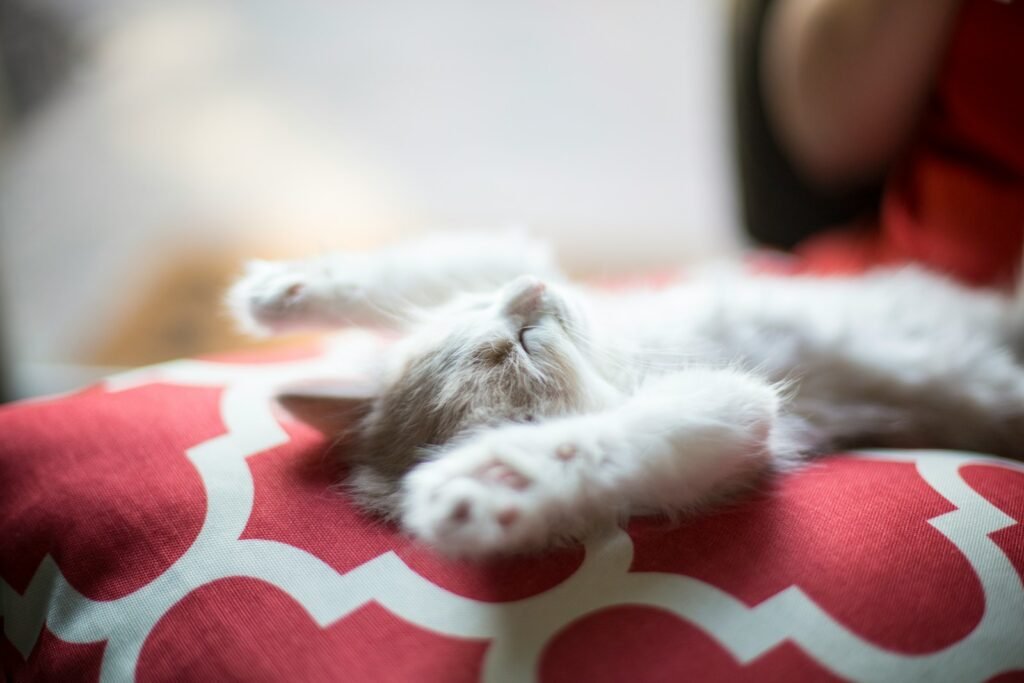
When a cat sleeps with its belly exposed, it’s a sign of extreme relaxation and trust. The stomach is a vulnerable area, so when a cat sleeps this way, it means they feel completely secure with their surroundings. However, this position might also mean they are trying to cool down. If your cat frequently assumes a belly-up sprawl, it’s a positive sign of trust and comfort.
The Box Fanatic
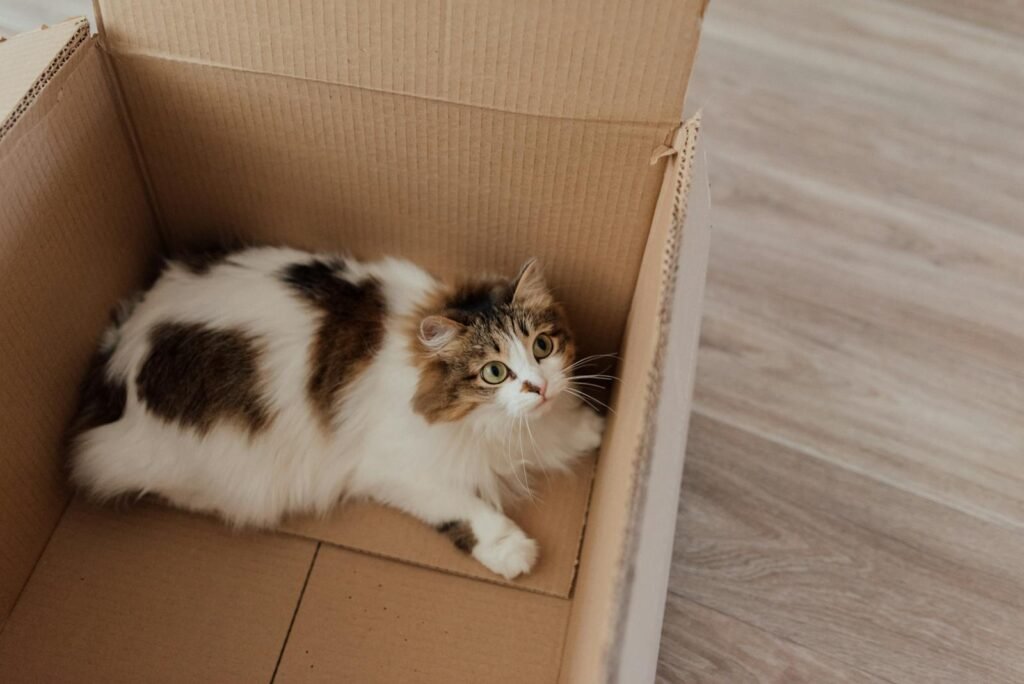
Cats have an inexplicable love for cardboard boxes, and many cats prefer sleeping inside them. This habit likely stems from their predatory instincts, as a box offers a sense of security and the ability to observe their surroundings while remaining hidden. This behavior may indicate a preference for a defined space that offers both warmth and security, reminiscent of their wild ancestors’ dens.
The Perch
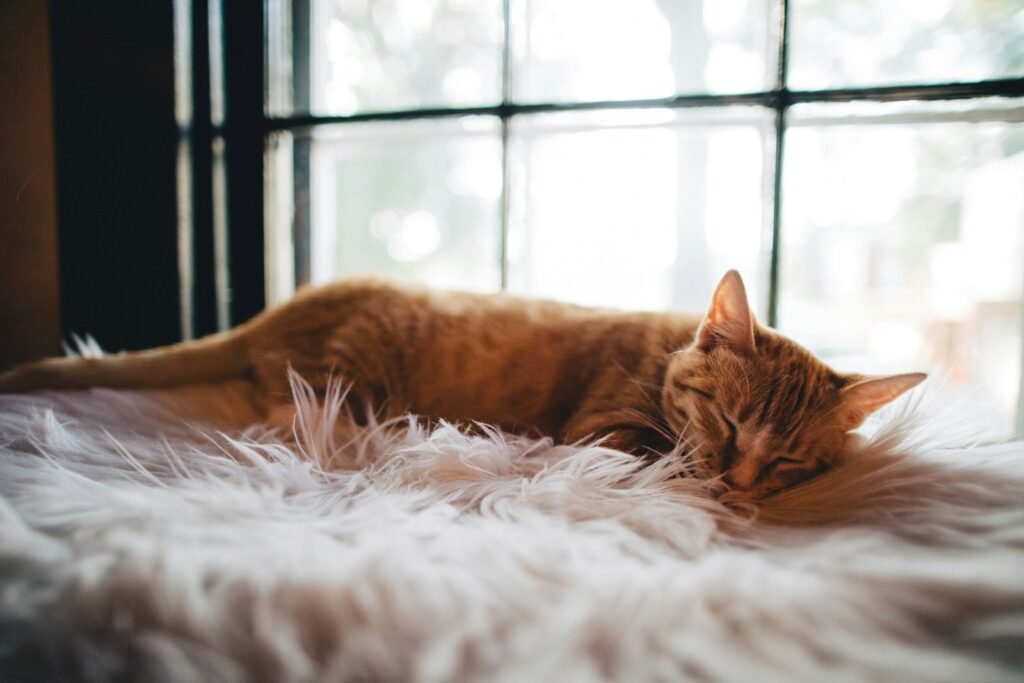
Some cats have the peculiar habit of sleeping in high places, such as the top of a bookshelf or a cupboard. This inclination towards elevated spaces is driven by their instinctual need to survey their territory from a safe vantage point. Sleeping in high places means your cat is practicing its natural instinct to stay safe from potential threats and have a birds-eye view of its environment.
The Head Press
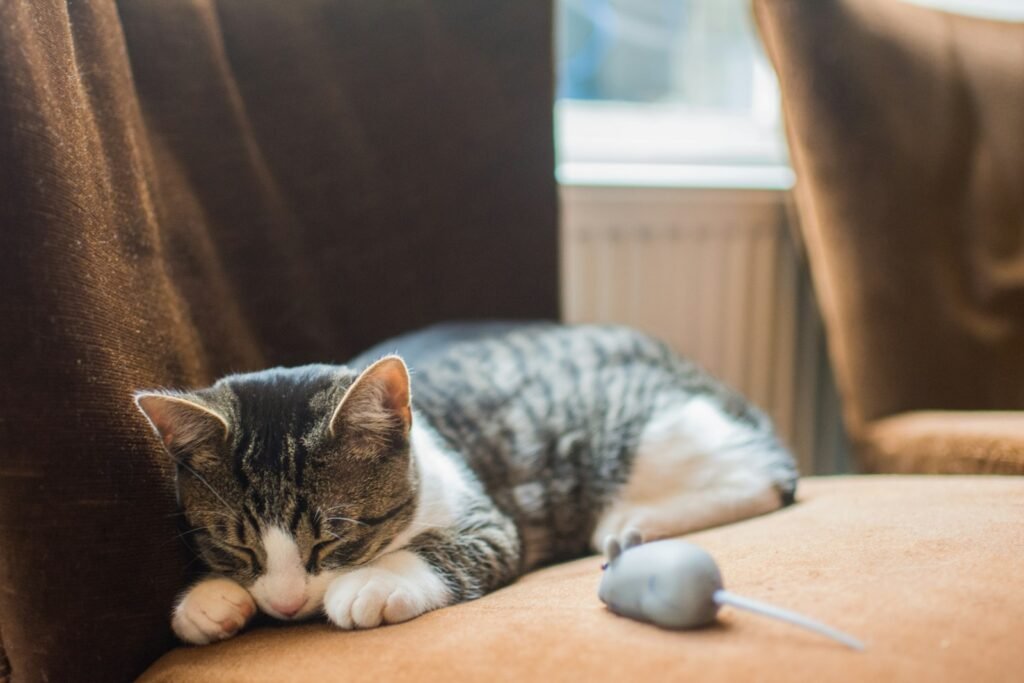
If you notice your cat pressing its head against a wall or furniture while sleeping, this might be a cause for concern. Although some cats may do this as a quirky comfort habit, in other cases, it could be a sign of a medical issue. Head pressing can indicate underlying health problems such as hypertension, brain tumors, or poisoning. It’s important to consult a veterinarian if you observe this unusual behavior frequently.
The Sleep Talker
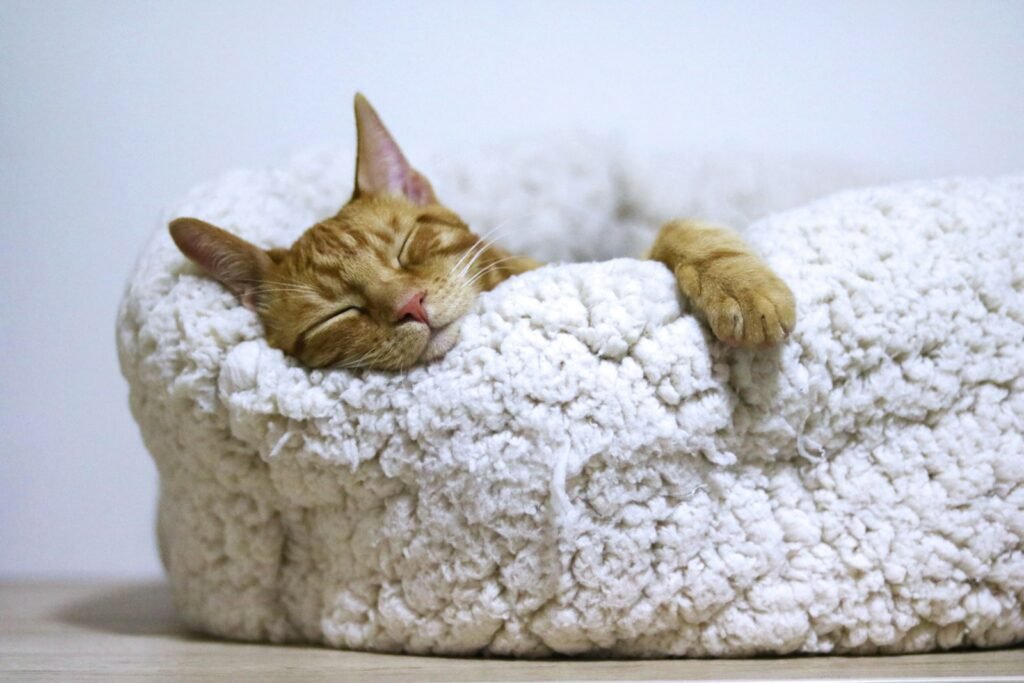
Ever heard your cat chattering or making noises while asleep? Cats can experience REM sleep, during which dreaming occurs. Vocalizations during sleep are generally a harmless behavior and indicate that the cat is in a deep stage of sleep. However, if the noises seem distressing or are accompanied by erratic movements, it may be worth discussing with a vet to rule out any potential health issues.
The Night Owl
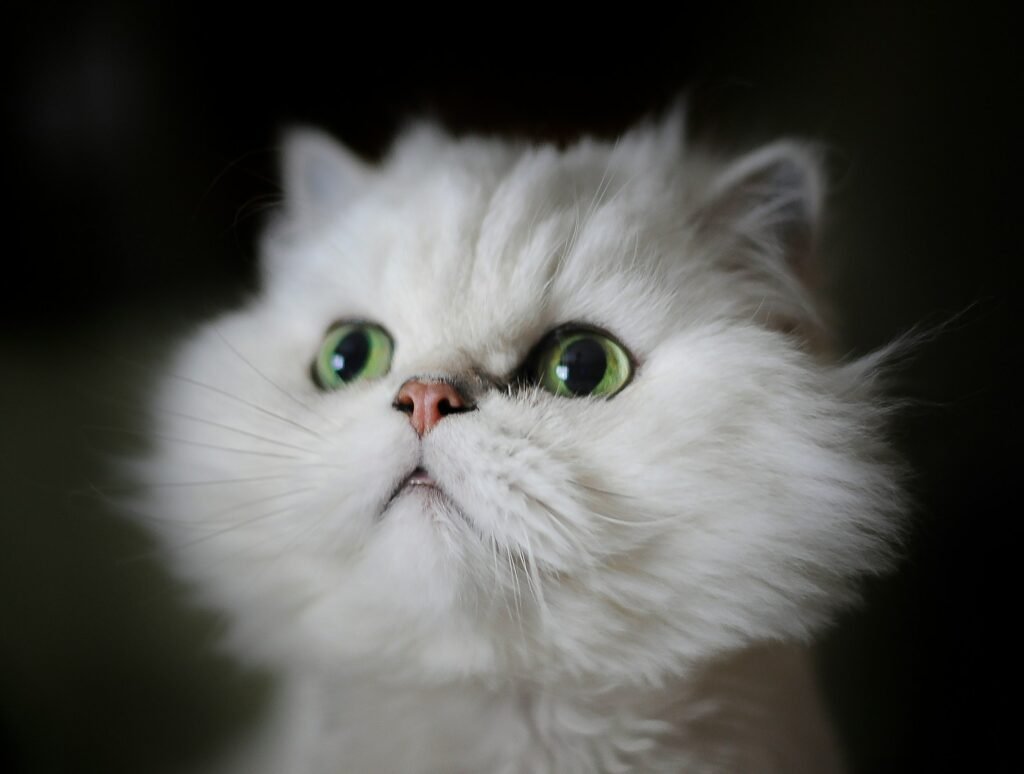
Unlike humans, cats are crepuscular animals, meaning they are most active during dusk and dawn. Hence, they may sleep for extended periods during the day and become lively at night. This behavior is an inherent trait that ties back to their wild ancestors who hunted during these times. Understanding this habit can help you accommodate their activity schedule, ensuring they get adequate exercise and mental stimulation while allowing you some much-needed sleep.
Conclusion

Cats have an array of sleeping habits that might seem unusual to us but make perfect sense given their evolutionary background and natural instincts. Recognizing and understanding these behaviors not only enriches our knowledge but also helps us ensure the well-being and happiness of our feline companions. Whether it’s a curled-up ball or a high perch snooze, these sleeping habits can provide insights into your cat’s emotions, health, and level of comfort within its environment.

Suhail Ahmed is a passionate digital professional and nature enthusiast with over 8 years of experience in content strategy, SEO, web development, and digital operations. Alongside his freelance journey, Suhail actively contributes to nature and wildlife platforms like Feline Fam, where he channels his curiosity for the Feline into engaging, educational storytelling.
With a strong background in managing digital ecosystems — from ecommerce stores and WordPress websites to social media and automation — Suhail merges technical precision with creative insight. His content reflects a rare balance: SEO-friendly yet deeply human, data-informed yet emotionally resonant.
Driven by a love for discovery and storytelling, Suhail believes in using digital platforms to amplify causes that matter — especially those protecting Earth’s biodiversity and inspiring sustainable living. Whether he’s managing online projects or crafting wildlife content, his goal remains the same: to inform, inspire, and leave a positive digital footprint.






